translation from the Taiji Classics
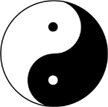

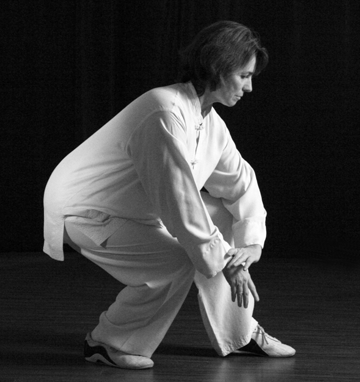
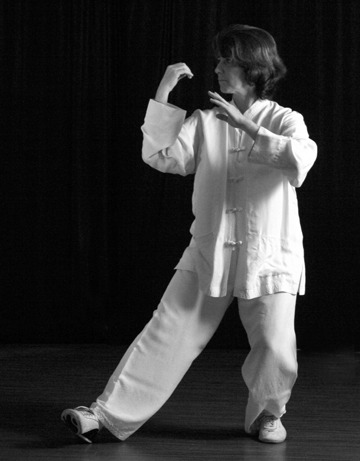

”Be as still as a mountain, move like a great river.”
translation from the Taiji Classics
photography: Yoni Newman
Taijiquan
(Tai Chi
Chuan - Grand Ultimate Fist) is
one of
3 major systems of the Chinese Internal Martial Arts. It helps to
promote
health, relaxation and the dynamic balance of mind-body and spirit that leads to wholeness . It is based
on the theory of yin and yang, the grand ultimate forces which depend
upon each other for perfect balance and harmony. The form consists of
interlocking,
seamless circles that ensure continuity and fluidity - the ability to
adapt and change without break.
We
must
respond appropriately to change in order for us to maintain perfect
balance in our lives. Tai Chi movement is like that of a great river
flowing on without end. Thus one can discover stillness and emptiness
within movement, oneness within diversity and simplicity within
complexity. The intricate movements, which have both energetic and
martial applications, combined with a refinement of conscious intent,
lead us to higher levels and eventually to union with Tao or the Absolute. The
meditative aspect of the "form" creates an opportunity to
look very closely at oneself... often closer than we feel comfortable
with.
Therein, however, lies the remarkable way in which it can change our
lives.
The genius of Taiji lies in its ability to teach us how to embrace the
positive and negative, all aspects of life and death, and in doing so
allows
us to accept, forgive and embrace all that comprise Spirit.
”His glory is in knowing that all things come together in One and life and death are equal.The Qigong techniques and the meditative aspects of this art promote rapid healing of the mind and body.
Zhuang Zi
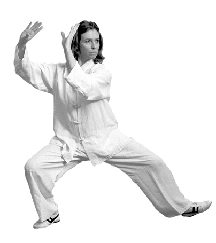
”Let the postures be without breaks or holes, hollows or projections,Chen Taijiquan is the parent style of the modern taiji forms. It's movements are characterized by its low powerful stances and whole body coiling movements called ’reeling the silk’. The mind directs the energy through the body, spiraling upwards from the feet, through the waist and out the extremities. The low stances provide cardiovascular exercise and the opening and closing of the chest and legs stretch and work the meridians and muscles, tendons and ligaments.
or discontinuities and continuities of form.”
translation from the Taiji Classics
This form features explosive releases of power not found in the other styles of taijiquan. Not only is this an excellent workout for the mind and body, but it is an art form that is very beautiful to watch and perform.
All
taiji styles
should include the principles of movement that are more obvious in Chen.
Back to Home
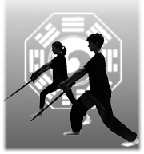
”Although the changes are numerous, the principle that pervades them is only one”Yang Style Sword (Taijijian) is based on the Taijiquan principles of movement with a weapon. A natural progression from bare hand forms is to apply the forms to weapons. Its slow graceful movements allow the practitioner to explore the challenges of lower stances and extension of Qi or energy to the weapon. The sword becomes an extension of the body and must move in complete coordination with the centre core.
translation from the Taiji Classics
Techniques for sword include thrusts to vulnerable cavities, slices to the joints and tendons, and defensive parrying

“He changes his actions and revises his plans, so that people will not recognize them,
He changes his abode and goes by a circuitous route, so that people cannot anticipate him.”
translation from the Art of War
Baguazhang (Pa Kua Chang - 8 Trigram Palm) is an integrated mind-body martial and
health
enhancing art developed in China, that uses powerful wave-like whole
body dynamics that resemble the movement of the Dragon. Its
characteristics include fast and slow circular walking and continuous
coiling, turning and twisting
movements much like that of a fan or tornado.
The
many
health benefits include increased nerve function and blood supply, a
reduction of friction and pressure on joints, surprisingly effective
self-defense capabilities, aerobic training, improved breathing and
coordination, increased flexibility and whole body speed and internal
energy skills (Qigong).